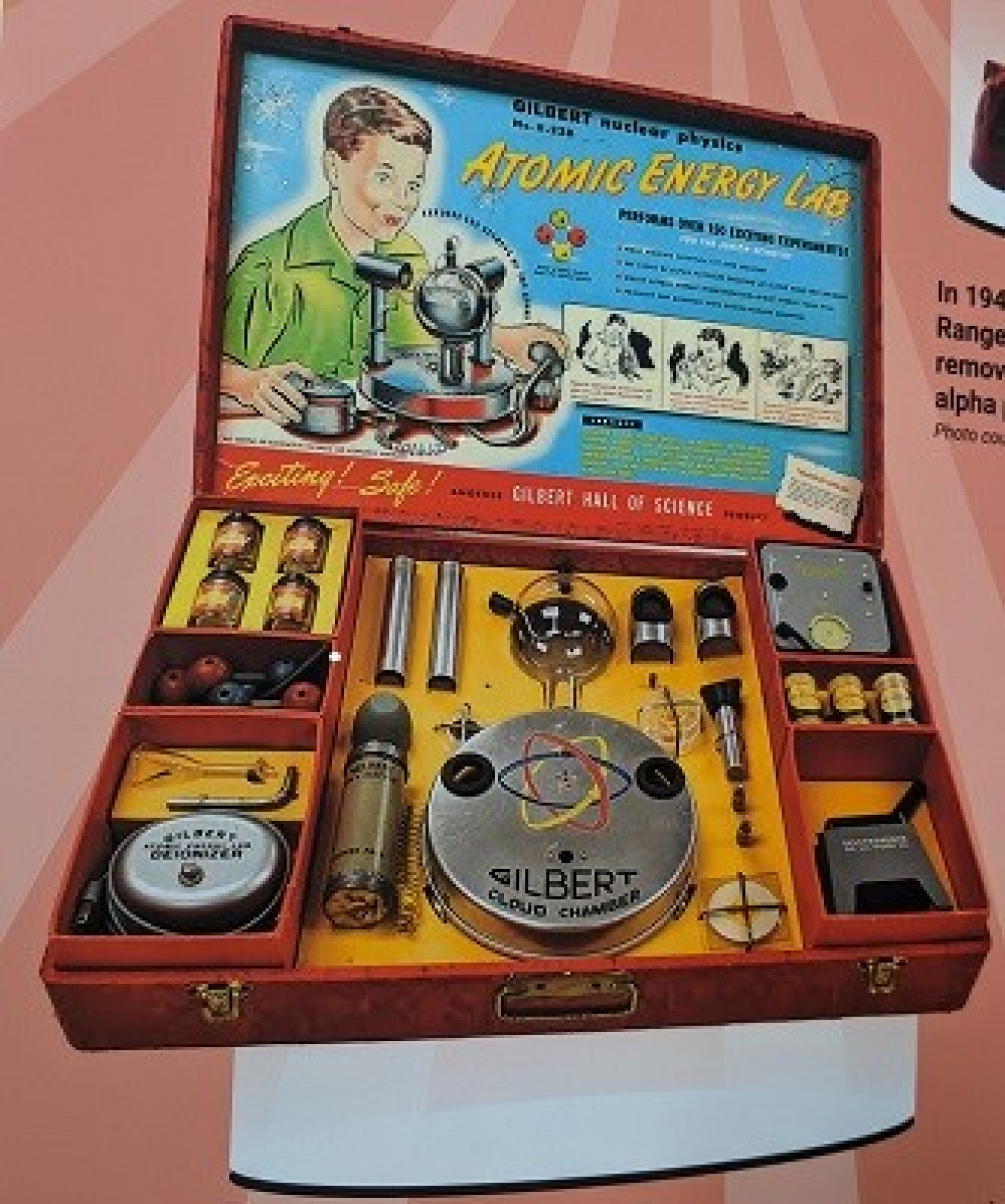Atomic Energy Lab kit was dubbed ‘the world’s most dangerous toy’
December 7, 2021
The Gilbert U-238 Atomic Energy Lab kit was released to the public in 1950 as a fun toy to teach young people about nuclear and chemical reactions using radioactive material.
The U-238 Atomic Energy Lab kit was created by Alfred Carlton Gilbert, an American athlete, magician, toymaker, businessman, and inventor of the Erector Set. Gilbert was noted in history as “the man who saved Christmas.” Gilbert has been credited with persuading the US Council of National Defense not to ban toy purchases during World War I.
The Atomic Energy Lab’s contents would make most modern-day holiday shopping parents shudder. But in 1950 and 1951, the kit was marketed to parents as a way to direct their children toward a potential career in science and engineering. One claim the kit made to attract the young scientist was the chance to watch a cloud chamber in action, exclaiming, “this is the closest man has come to watching the atom!”
The Atomic Energy Lab Kit could fuel up to 150 unique experiments and could be purchased for $49.50. The equivalent toy today would cost about $530.
The Atomic Energy Lab Kit contained the following:
- Battery-powered Geiger–Müller counter
- Electroscope
- Spinthariscope
- Wilson cloud chamber with short-lived alpha source (Po-210) in the form of a wire
- Four glass jars containing natural uranium-bearing (U-238) ore samples (autunite, torbernite, uraninite, and carnotite from the "Colorado Plateau region")
- Low-level radiation sources:
- beta-alpha (Pb-210)
- pure beta (possibly Ru-106)
- gamma (Zn-65)
- "Nuclear spheres" for making a model of an alpha particle
- Gilbert Atomic Energy Manual — a 60-page instruction book written by Dr. Ralph E. Lapp
- Learn How Dagwood Split the Atom — comic book introduction to radioactivity, written with the help of Gen. Leslie Groves (director of the Manhattan Project) and John R. Dunning (a physicist who verified fission of the uranium atom)
- Prospecting for Uranium — a 1949 book published jointly by the Atomic Energy Commission and the United States Geological Survey
- Three C batteries
- Gilbert Toys catalog
In 2006, Radar Magazine dubbed the Atomic Energy Lab “the world’s most dangerous toy.” The kit contained instructions cautioning users not to break the seals on the three ore-sample jars, saying “they tend to flake and crumble, and you would run the risk of having radioactive ore spread out in your laboratory.”
Shawn Montgomery, LM public participation specialist, said “this toy, and others like them made at the time, are interesting examples of the way nuclear technology has influenced pop culture. The atomic age inspired toys, fashion, architecture and especially science fiction.”
The Atomic Legacy Cabin (ALC) in Grand Junction, Colorado, has several objects from this era in their collection, but not a lab kit. The cabin’s mission is to educate and promote the protection of human health and the environment while focusing on the history of the Colorado Plateau’s involvement in uranium production during the Manhattan Project and Cold War eras.
Fewer than 5,000 Atomic Energy kits were sold, perhaps due to the relatively high price rather than the safety concerns of the era.

